The most active volcano in Hawaii has seen the number of earthquakes at its summit double over the past week, according to the U.S. Geological Survey.



Scientists have achieved unprecedented control over quantum transport using a 31-qubit superconducting processor, opening new possibilities for next-generation electronics and thermal management. This approach allows researchers to observe and manipulate quantum particles with extraordinary precision, potentially revolutionizing how we develop future technologies.
The research, led by teams from Singapore and China, marks a significant advance in understanding how particles, energy, and information flow at the quantum level. This breakthrough could accelerate development of more efficient nanoelectronics and thermal management systems.
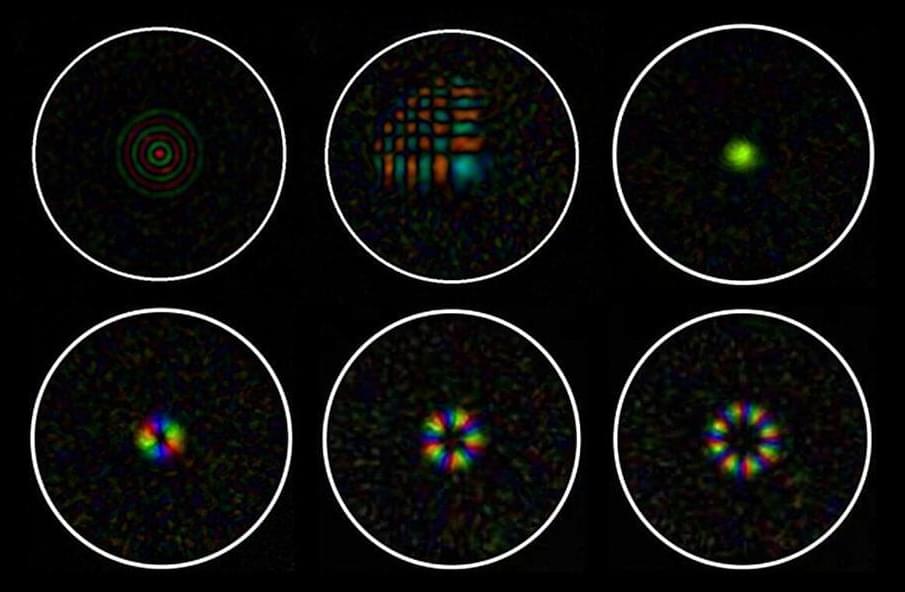
Researchers at the University of Adelaide, as part of an international team, have developed an approach that makes advanced microscopy possible through an optical fiber thinner than a human hair.
“Recent advances in optics have made it possible to controllably deliver light through extremely thin optical fibers, but delivering more complicated light patterns that are needed to perform advanced microscopy has eluded researchers until now,” said Dr. Ralf Mouthaan from the University of Adelaide’s Center of Light for Life, who undertook the project.
With a footprint far smaller than any other fiber imaging device, this will enable microscope images to be collected from previously inaccessible parts of the human body, while minimizing associated tissue damage.

Scientists using observations from NASA’s Neil Gehrels Swift Observatory have discovered, for the first time, the signal from a pair of monster black holes disrupting a cloud of gas in the center of a galaxy.
“It’s a very weird event, called AT 2021hdr, that keeps recurring every few months,” said Lorena Hernández-García, an astrophysicist at the Millennium Institute of Astrophysics, the Millennium Nucleus on Transversal Research and Technology to Explore Supermassive Black Holes, and University of Valparaíso in Chile. “We think that a gas cloud engulfed the black holes. As they orbit each other, the black holes interact with the cloud, perturbing and consuming its gas. This produces an oscillating pattern in the light from the system.”
A paper about AT 2021hdr, led by Hernández-García, was published Nov. 13 in the journal Astronomy and Astrophysics.
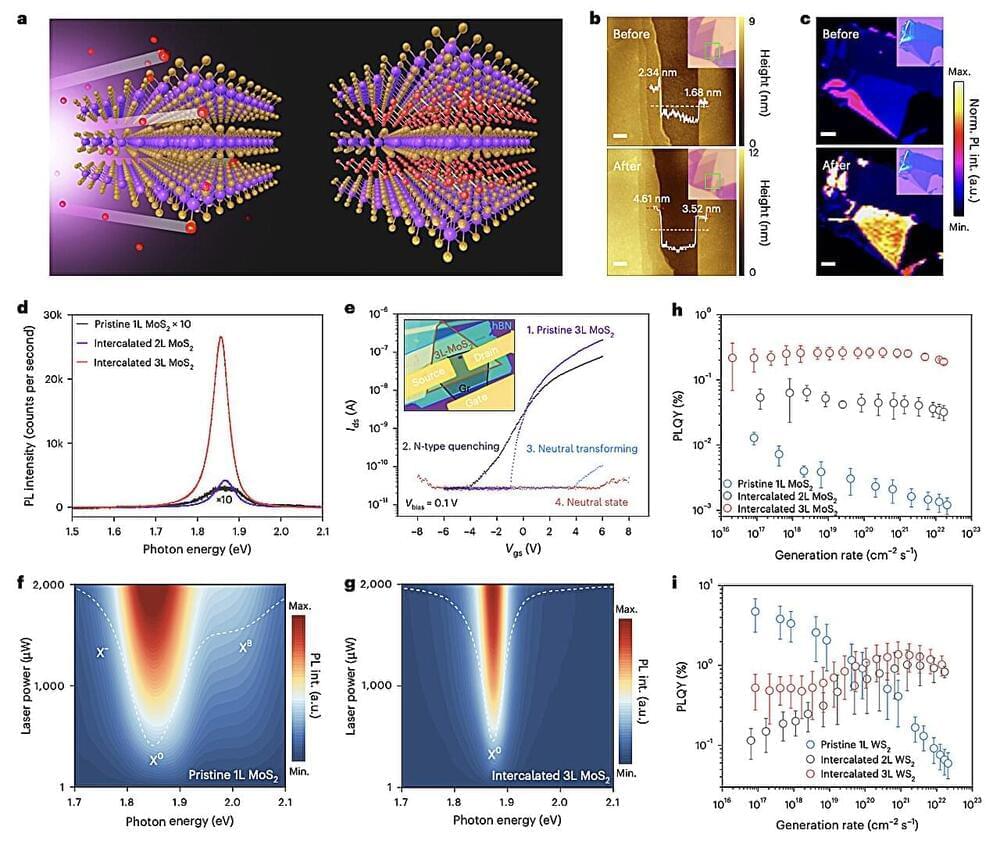
Light-emitting diodes (LEDs), semiconductor-based devices that emit light when an electric current flows through them, are key building blocks of numerous electronic devices. LEDs are used to light up smartphone, computer, and TV displays, as well as light sources for indoor and outdoor environments.
Past studies consistently observed a decline in the performance and efficiency of LED devices based on two-dimensional (2D) materials at high current densities. This loss of efficiency at high current densities has been linked to high levels of interaction between excitons, which cause a process known as exciton-exciton annihilation (EEA).
Essentially, the properties of some 2D materials prompt excitons to strongly interact with each other, causing excitons to “deactivate” one another. This results in a significant waste of energy that could otherwise contribute to the lighting of LEDs.

The Niitsitapi, or Blackfoot Indians, imagined that giant puffballs were created by fallen stars. They painted the fruit bodies of these globose fungi as white circles arising from a dark band along the bottom edge of tipi covers to symbolize the birth of life. In our era of global environmental damage, a strain of this indigenous reverence for fungi has been adopted as a symbol of hope.
Sign up to get exclusive access.

A team of physics educators from Italy, Hungary, Slovenia, and Germany is pioneering a new approach to teaching quantum physics in schools. Traditional classroom methods have typically emphasized the history and origins of quantum physics, which can often create challenges for learners.
The researchers, including physics education specialist Professor Philipp Bitzenbauer from Leipzig University, focus on qubits—two-state systems that are both the simplest and most crucial quantum systems, capable of describing many situations. Mastering the control and manipulation of these qubits is fundamental to advancing modern quantum technologies.
According to Bitzenbauer, until now there have been no empirical studies of the effectiveness of these approaches using two-state systems in developing conceptual understanding in learners. There is also a lack of scientific research on the specific advantages and disadvantages for learning of different teaching approaches based on two-state systems.
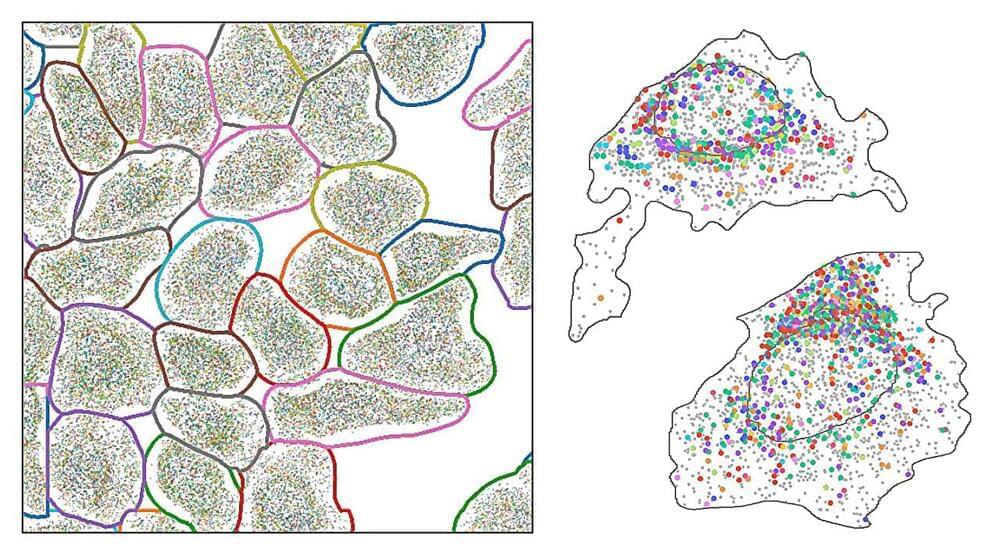
In a recent study published in Nature Communications, a team of researchers at the Carl R. Woese Institute for Genomic Biology reports a new, robust computational toolset to extract biological relationships from large transcriptomics datasets. These efforts will help scientists better investigate cellular processes.
Living organisms are governed by their genome—an instruction manual written in the language of DNA that dictates how an organism grows, survives, and reproduces. By regulating the abundance of different RNA transcripts, cells control their protein expression level, thereby shaping their functions and responses to the environment.
Transcriptomics is the study of gene expression through cataloging the presence and abundance levels of active RNA transcripts generated from the genome under different conditions. Through the lens of RNA, transcriptomics technologies allow scientists to study the complex interactions that enable life and cause disease, as well as assess the biological effects of therapeutics.
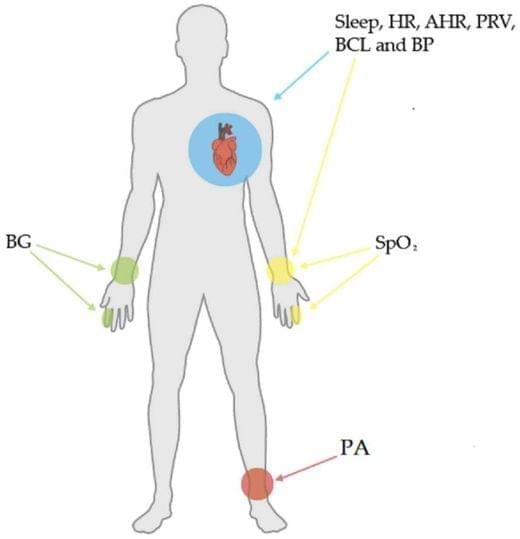
Unlocking Real-Time Inflammation Monitoring with Active-Reset Protein Sensors.
Imagine a tiny device that could continuously monitor your body’s inflammation levels, offering insights in real time to help manage diseases. While sensors for small molecules like glucose have existed for years, tracking proteins—a critical component in understanding inflammation—has been a major challenge. Proteins are present at much lower levels in the body, and traditional sensors struggle with slow response times due to their high-affinity binding to these molecules.
A team led by Zargartalebi has now overcome this barrier by introducing active-reset protein sensors. These sensors employ high-frequency oscillations of positive voltage to rapidly release bound protein molecules from their sensing electrodes. This breakthrough allows the sensors to reset in under a minute, enabling continuous tracking of protein levels.
The researchers incorporated these sensors into a microneedle device, which was successfully tested in mice to monitor cytokines—key markers of inflammation associated with diabetes. Unlike previous approaches, this method is not only simple to implement but can also be adapted to various sensor designs, potentially revolutionizing how we monitor and respond to conditions like chronic inflammation.
By bringing real-time protein monitoring closer to reality, active-reset sensors could pave the way for more dynamic and responsive healthcare, ensuring better disease management and prevention.
[#biosensors](https://www.facebook.com/hashtag/biosensors?__eep__=6&__cft__[0]=AZXpWTjqoXcElrcVMft-YBHF33SrUIfWG14SxebDv6jc7ayB9obklbDJ5BXDEcXMFhRK4gARwyDe24ko0Pjq0q5uSGpyaiia1YlxceB88HQ4AkLMRRKBaP_TJR0TQWWUQlYvZFrxBhxODGJhyWYo_RjJbdkcNE9A_kXuT2XJxXfpKD1LGhewSjGBaGndlInALDM&__tn__=*NK-R) [#invivo](https://www.facebook.com/hashtag/invivo?__eep__=6&__cft__[0]=AZXpWTjqoXcElrcVMft-YBHF33SrUIfWG14SxebDv6jc7ayB9obklbDJ5BXDEcXMFhRK4gARwyDe24ko0Pjq0q5uSGpyaiia1YlxceB88HQ4AkLMRRKBaP_TJR0TQWWUQlYvZFrxBhxODGJhyWYo_RjJbdkcNE9A_kXuT2XJxXfpKD1LGhewSjGBaGndlInALDM&__tn__=*NK-R) [#sensing](https://www.facebook.com/hashtag/sensing?__eep__=6&__cft__[0]=AZXpWTjqoXcElrcVMft-YBHF33SrUIfWG14SxebDv6jc7ayB9obklbDJ5BXDEcXMFhRK4gARwyDe24ko0Pjq0q5uSGpyaiia1YlxceB88HQ4AkLMRRKBaP_TJR0TQWWUQlYvZFrxBhxODGJhyWYo_RjJbdkcNE9A_kXuT2XJxXfpKD1LGhewSjGBaGndlInALDM&__tn__=*NK-R) [#inflammation](https://www.facebook.com/hashtag/inflammation?__eep__=6&__cft__[0]=AZXpWTjqoXcElrcVMft-YBHF33SrUIfWG14SxebDv6jc7ayB9obklbDJ5BXDEcXMFhRK4gARwyDe24ko0Pjq0q5uSGpyaiia1YlxceB88HQ4AkLMRRKBaP_TJR0TQWWUQlYvZFrxBhxODGJhyWYo_RjJbdkcNE9A_kXuT2XJxXfpKD1LGhewSjGBaGndlInALDM&__tn__=*NK-R) [#Microneedle](https://www.facebook.com/hashtag/microneedle?__eep__=6&__cft__[0]=AZXpWTjqoXcElrcVMft-YBHF33SrUIfWG14SxebDv6jc7ayB9obklbDJ5BXDEcXMFhRK4gARwyDe24ko0Pjq0q5uSGpyaiia1YlxceB88HQ4AkLMRRKBaP_TJR0TQWWUQlYvZFrxBhxODGJhyWYo_RjJbdkcNE9A_kXuT2XJxXfpKD1LGhewSjGBaGndlInALDM&__tn__=*NK-R)
[#regenerativesensors](https://www.facebook.com/hashtag/regenerativesensors?__eep__=6&__cft__[0]=AZXpWTjqoXcElrcVMft-YBHF33SrUIfWG14SxebDv6jc7ayB9obklbDJ5BXDEcXMFhRK4gARwyDe24ko0Pjq0q5uSGpyaiia1YlxceB88HQ4AkLMRRKBaP_TJR0TQWWUQlYvZFrxBhxODGJhyWYo_RjJbdkcNE9A_kXuT2XJxXfpKD1LGhewSjGBaGndlInALDM&__tn__=*NK-R) [#pointofcare](https://www.facebook.com/hashtag/pointofcare?__eep__=6&__cft__[0]=AZXpWTjqoXcElrcVMft-YBHF33SrUIfWG14SxebDv6jc7ayB9obklbDJ5BXDEcXMFhRK4gARwyDe24ko0Pjq0q5uSGpyaiia1YlxceB88HQ4AkLMRRKBaP_TJR0TQWWUQlYvZFrxBhxODGJhyWYo_RjJbdkcNE9A_kXuT2XJxXfpKD1LGhewSjGBaGndlInALDM&__tn__=*NK-R) [#diagnostics](https://www.facebook.com/hashtag/diagnostics?__eep__=6&__cft__[0]=AZXpWTjqoXcElrcVMft-YBHF33SrUIfWG14SxebDv6jc7ayB9obklbDJ5BXDEcXMFhRK4gARwyDe24ko0Pjq0q5uSGpyaiia1YlxceB88HQ4AkLMRRKBaP_TJR0TQWWUQlYvZFrxBhxODGJhyWYo_RjJbdkcNE9A_kXuT2XJxXfpKD1LGhewSjGBaGndlInALDM&__tn__=*NK-R) [#cytokines](https://www.facebook.com/hashtag/cytokines?__eep__=6&__cft__[0]=AZXpWTjqoXcElrcVMft-YBHF33SrUIfWG14SxebDv6jc7ayB9obklbDJ5BXDEcXMFhRK4gARwyDe24ko0Pjq0q5uSGpyaiia1YlxceB88HQ4AkLMRRKBaP_TJR0TQWWUQlYvZFrxBhxODGJhyWYo_RjJbdkcNE9A_kXuT2XJxXfpKD1LGhewSjGBaGndlInALDM&__tn__=*NK-R)
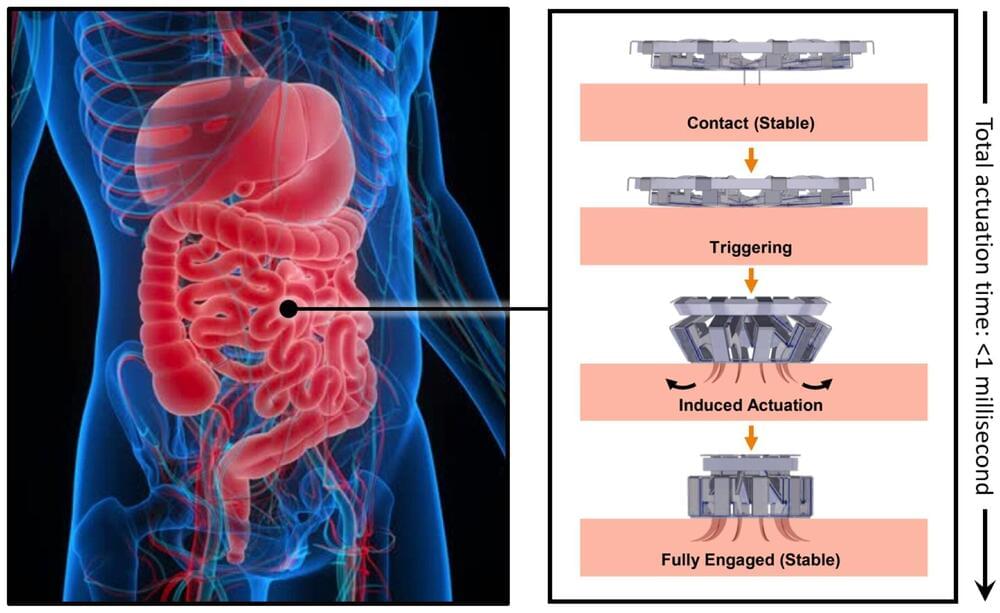
Ingestible devices are often used to study and treat hard-to-reach tissues in the body. Swallowed in pill form, these capsules can pass through the digestive tract, snapping photos or delivering drugs.
While in their simplest form, these devices are passively transported through the gut, there are a wide range of applications where you may want a device to attach to the tissue or other flexible materials. A rich history of biologically inspired solutions exist to address this need, ranging from cocklebur-inspired Velcro to slug-inspired medical adhesives, but the creation of on-demand and reversible attachment mechanisms that can be incorporated into millimeter-scale devices for biomedical sensing and diagnostics remains a challenge.
A new interdisciplinary effort led by Robert Wood, the Harry Lewis and Marlyn McGrath Professor of Engineering and Applied Sciences in the Harvard John A. Paulson School of Engineering and Applied Sciences (SEAS), and James Weaver, of Harvard’s Wyss Institute, has drawn inspiration from an unexpected source: the world of parasites.